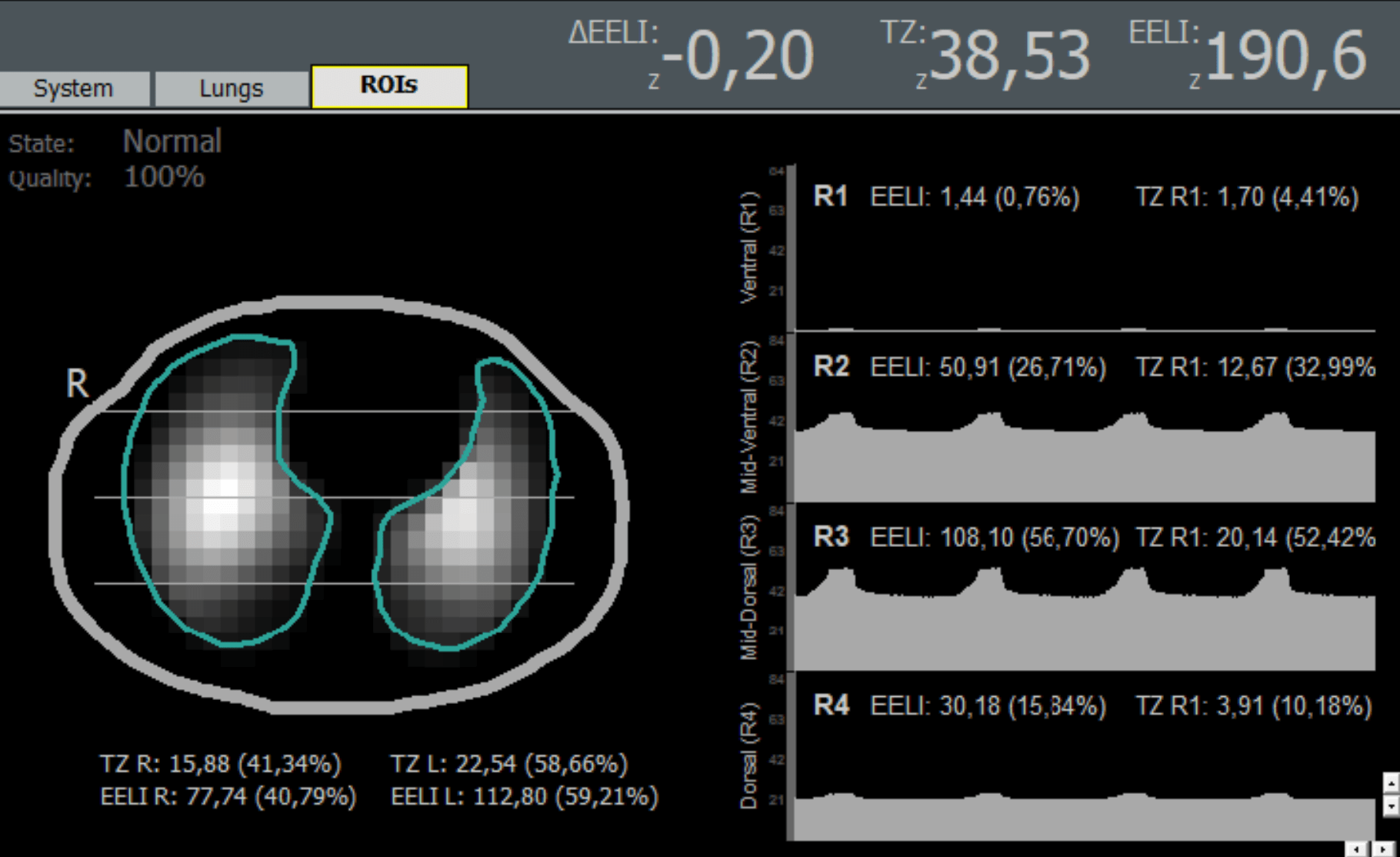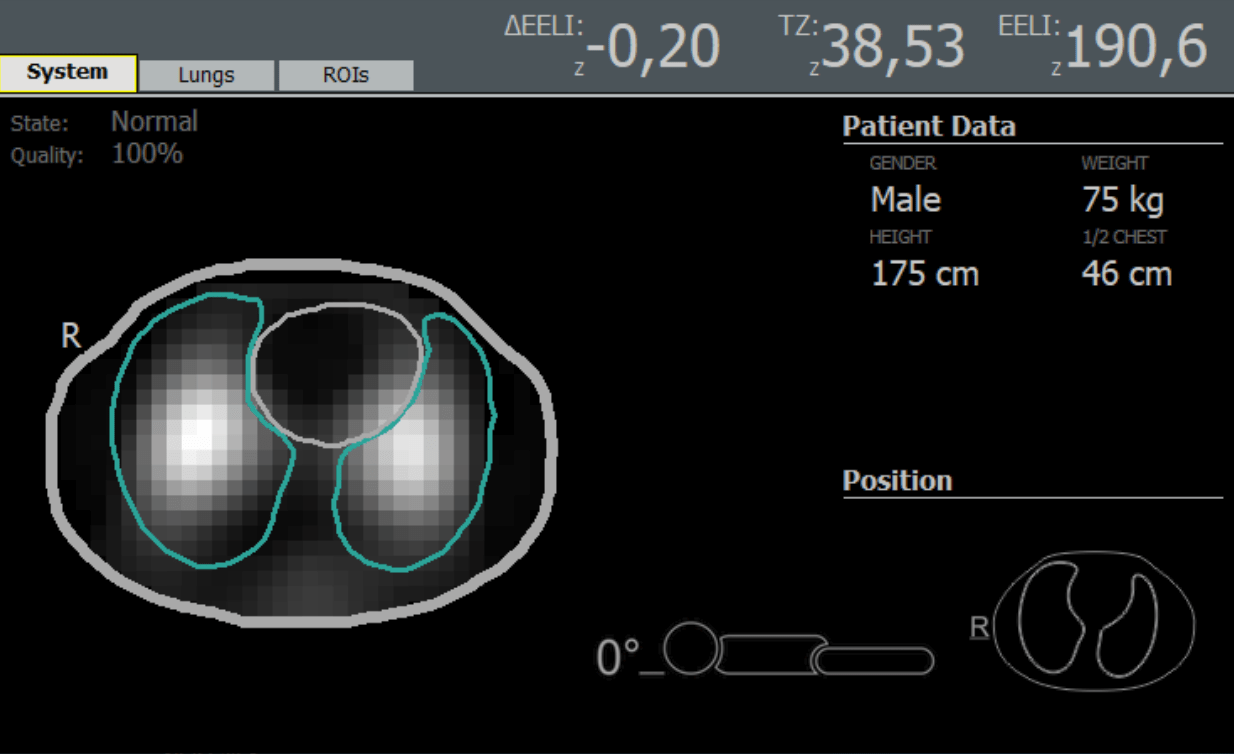Electrical Impedance Tomography
The Fluxmed monitors also have the possibility of incorporating, as with the Volumetric Capnography, an Electrical Impedance Tomography (EIT) module. The measurement of EIT involves the application of small currents, and the measurement of the resulting voltages to determine the impedance changes related to ventilation in the thoracic section.
The images and tomographic parameters are generated through the collection and processing of specific algorithms that allow the evaluation of the regional distribution of ventilation through the regions of interest (ROI).

It also allows the assessment of short-term changes in lung volume at the end of expiration through end-expiratory lung impedance (EELI) and "tidal" impedance (TZ).

Considering that mechanical ventilation (MV) is a fundamental tool for the support of patients with acute respiratory failure and it is one of the interventions that characterizes the intensive care units (ICU), pulmonary protection ventilation strategies should somehow try to incorporate, together with other variables (such as the Stress Index and the Transpulmonary Pressure), concepts of pulmonary mechanics that give us some pattern of the distribution of ventilation in the different regions of the lung in order to maximize the individualization of the ventilatory strategy. The use of X-ray or CAT scan allows obtaining specific regional information, but only as an instantaneous image in time, and does not allow to determine how the different pulmonary regions respond to therapeutic interventions over time which is a very difficult task if continuous regional information is not available. Fluxmed with the EIT module, allows to have continuous information about the regional distribution of ventilation represented in the form of images, curves and values; obtain trends in the regional distribution of ventilation; graph the trends of changes in lung volume at the end of expiration.
